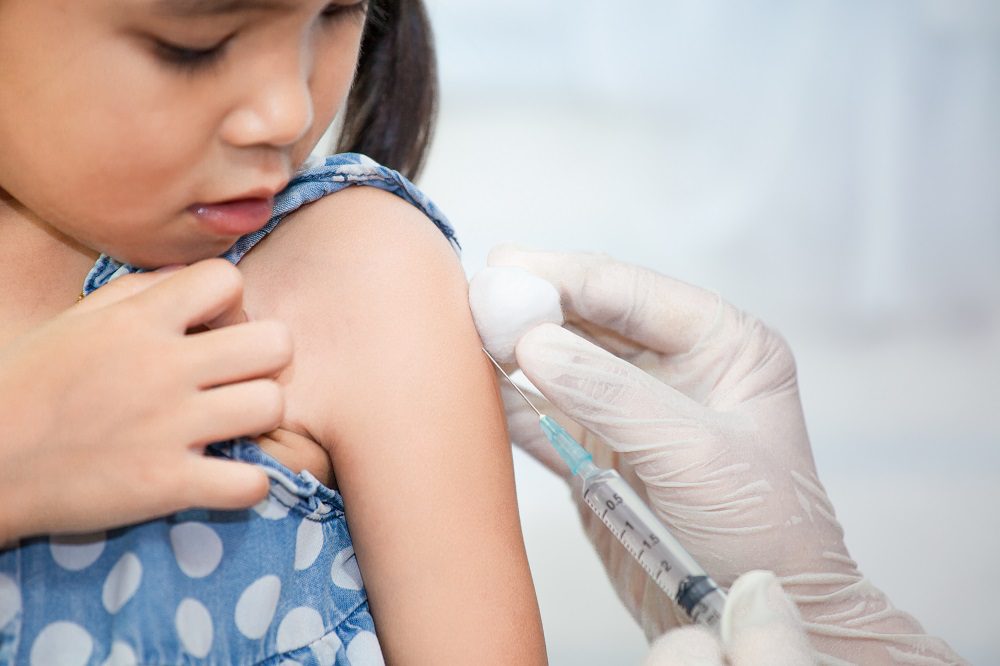PFAS and the Immune System: What Do We Know?

PFAS (per- and polyfluoroalkyl substances) are a class of chemicals that manufacturers add to a wide variety of consumer products to make them non-stick, waterproof, and stain-resistant. There are currently at least 9,000 different chemicals classified as PFAS, making them among the most ubiquitous synthetic chemicals in the world. Scientists are concerned about people’s exposures to PFAS because they have been linked to a range of health effects including high cholesterol and cancers, even at low levels of exposure.
There is also growing evidence that PFAS can affect the immune system by suppressing the ability of the immune system to make antibodies critical to fighting infectious diseases. In light of the current COVID-19 pandemic and the many risks facing communities, scientists are starting to consider whether communities with higher exposures to PFAS, whether through contaminated drinking water or other sources, may be more vulnerable to COVID-19 and other infectious diseases.
- Studies in the Faroe Islands found children with higher blood levels of PFAS had lower levels of diphtheria and tetanus antibodies two years after receiving their DTaP vaccination at age five (Grandjean 2012).
- Study of US children ages 12 to 19 found those with higher levels of PFOS also had lower levels of antibodies to rubella as well as mumps (Stein 2016).
- In Norway, researchers found that children at age three, whose mothers had higher blood levels of PFAS at the time of their birth, experienced more colds and episodes of gastroenteritis. The children also had lower levels of antibodies to rubella (Granum 2013).
Recent studies have found the effects of PFAS on the efficacy of childhood vaccinations may persist through early adolescence (Grandjean 2017), and other studies are now suggesting a possible link between PFAS and asthma in children (Dong 2013, Averina 2019). New research in animals continues to strengthen the link between PFAS and the immune system and more studies are underway, such as the Multi-site Health Study by the Centers for Disease Control and Prevention’s (CDC) Agency for Toxic Substances and Disease Registry (ATSDR).
What is the state of the science?
PFOS and PFOA—two of the most common PFAS—are each “presumed to be an immune hazard to humans.” That was the conclusion of a 2016 report by the National Toxicology Program (NTP 2016). The federal body reviewed 153 studies in humans, animals, and other laboratory experiments, and found evidence linking exposures with a range of immune system effects. The evidence is stronger for some effects than others:
• Effects for PFOA and PFOS (stronger evidence):
Suppressed production of antibodies, including suppressed response to vaccines
• Effects for PFOA (weaker evidence):
Increased rates of hypersensitivity-related outcomes, which can include conditions like asthma, allergic responses, and rhinitis (runny nose, sneezing, and stuffiness)
• Effects for PFOS (weaker evidence):
Increased occurrence of infectious diseases and suppressed activity of natural killer cells—immune cells that are important for warding off viruses and cancer cells
Children may be especially sensitive to the effects of PFAS because their immune systems are still developing. In a 2017 review by the US Environmental Protection Agency (EPA), scientists looked at 64 studies in children and found links between prenatal and/or childhood exposure to PFAS and a variety of health effects, including a diminished response to vaccines (Rappazzo 2017):
What are the implications?
Because PFAS can interfere with the immune system, scientists are concerned that exposures to these contaminants could make populations more vulnerable to infectious diseases, such as COVID-19, and may reduce the effectiveness of routine vaccinations. Additionally, changes to the developing immune system early in life could affect health later in life. Given the evidence, leading experts say current drinking water guidelines are not adequately protective, especially for young children (Grandjean 2015). What’s more, contaminated drinking water often contains many types of PFAS, therefore more research is needed to better understand the health of effects of these complex mixtures.
For more information about PFAS contaminants in drinking water, sources of exposures, and how to protect your health, visit the PFAS Exchange at www.pfas-exchange.org.
